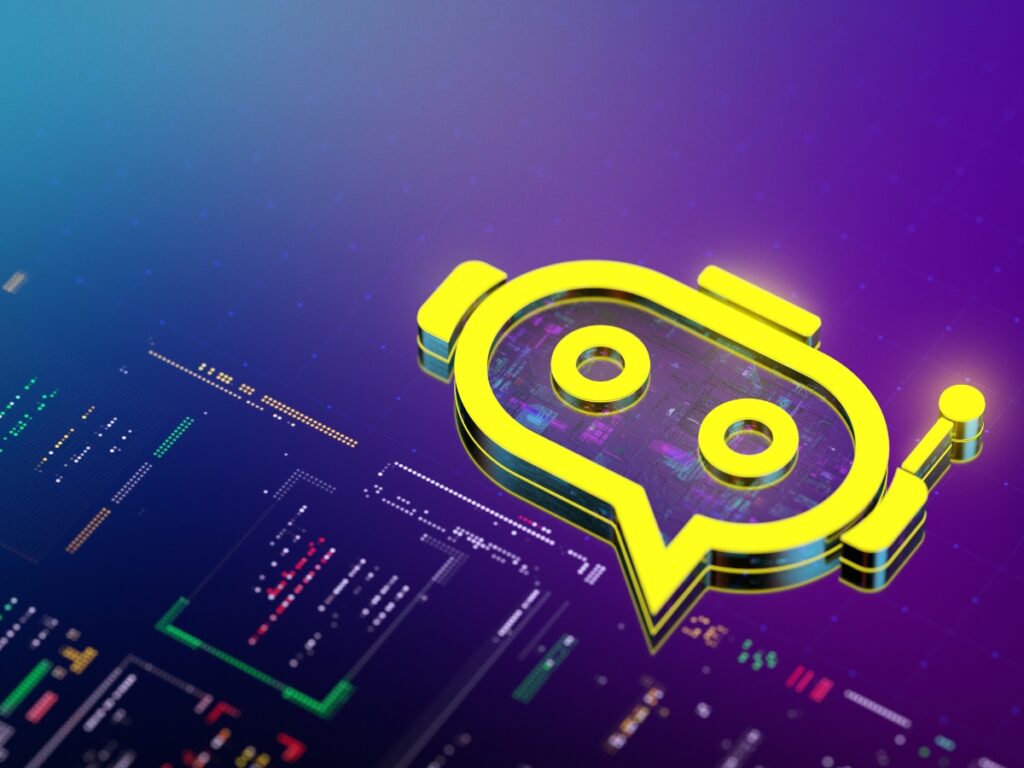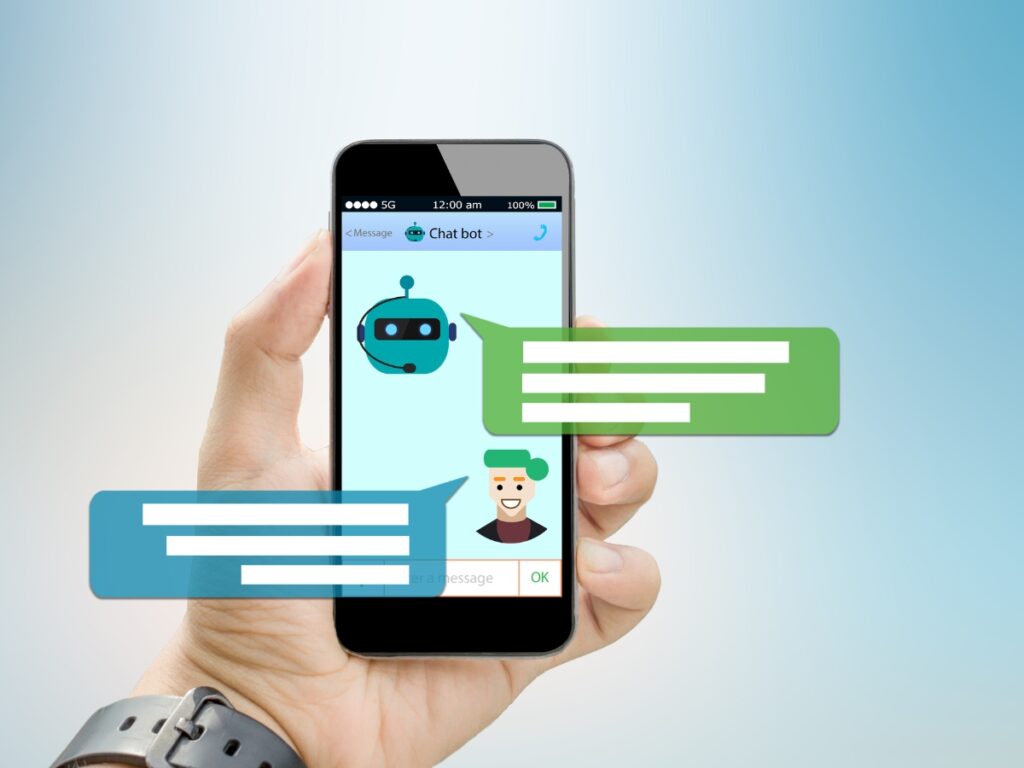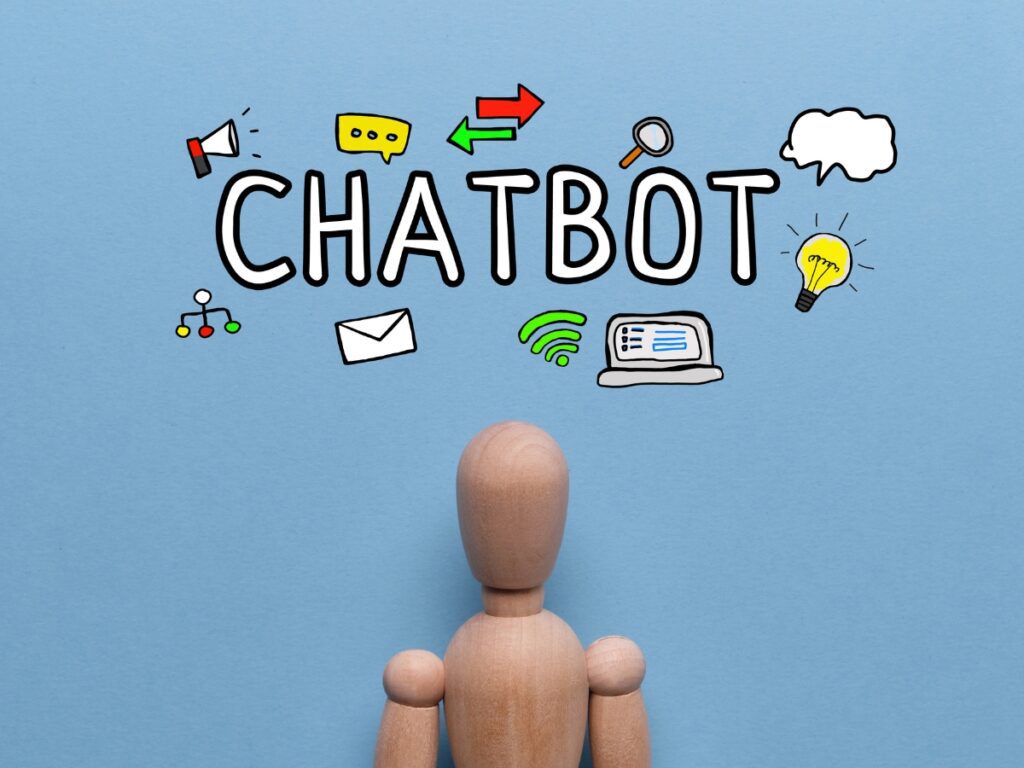This guide provides an in-depth look at chatbot ROI and its significant impact on modern business approaches. We’ll explore its essential elements, real-world effects, and crucial role in measuring digital success in today’s dynamic market.
Quick Recap – For the Time-Conscious Reader
- Chatbot ROI is reshaping how businesses evaluate their digital tools by quantifying the benefits drawn from automated customer interactions. It’s not just about monetary gains; it encapsulates customer satisfaction, operational efficiency, and enhanced brand reputation. Businesses streamline their processes by understanding and optimizing chatbot ROI and carve a niche in the competitive landscape.
- Embracing metrics like chatbot ROI is essential in this age of digital transformation. This parameter isn’t a mere optional analytic; it’s a critical benchmark. By incorporating chatbot ROI insights into your business strategy, you ensure your brand remains ahead of the curve, outpacing competitors and delighting customers simultaneously.
Welcome to the first Blue Lane Group article in the Best Chatbots for Customer Service: Blueprint for Success in 2023 series. These posts examine the essential chatbot topics of customer service automation, exploring how chatbots revolutionize interactions, enhance user satisfaction, and redefine the benchmarks for excellence in modern customer-centric businesses.

Disclosure: The digital products mentioned in this article are highly regarded in the marketplace and are endorsed by the Blue Lane Group staff. We may earn a commission at no additional cost if you purchase through the provided links.
Table of Contents

Introduction: Drive Unmatched Profits with Chatbot ROI
In today’s digital era, chatbots have become pivotal for businesses aiming to optimize user engagement and operations. The true potential of chatbots shines through when one evaluates their return on investment (ROI).
With platforms like Botanalytics, Chatbase by Google, and Amplitude, companies can delve deep into chatbot performance, translating insights into strategies that bolster ROI.
By harnessing such tools and focusing on metrics, businesses amplify monetary gains and strengthen user relationships and operational efficiency.
Understanding ROI in Chatbot Implementations
Understanding the Return on Investment (ROI) is paramount when implementing technology solutions. ROI offers a precise success metric, gauging the financial returns against the initial investment.
In chatbots, ROI isn’t just about money; it’s also about time saved, customer satisfaction levels achieved, and operational efficiencies gained. Tools like MobileMonkey and Drift have become popular due to the tangible value they bring to businesses, translating to a promising chatbot ROI.
Why is Chatbot ROI Crucial for Businesses?
Chatbot ROI is a compass for businesses, guiding their investment strategies in the digital frontier. When a business understands its chatbot’s ROI, it gains insights into the bot’s effectiveness, areas of improvement, and the overall value to the company.
High ROI indicates that a chatbot, perhaps built using platforms like Botsify or Tars, engages with customers effectively and drives conversions and sales. Conversely, a lower ROI might prompt businesses to reassess their chatbot strategies or seek advanced solutions.
Distinguishing Between Internal and External Chatbot Expenses
Navigating the costs of chatbot implementations can be tricky. Internal expenses relate to in-house costs such as employee salaries, training, and infrastructure adjustments. In contrast, external payments involve costs associated with third-party platforms like Dialogflow or Botpress, licensing fees, and potential consultancy charges.
A platform like IBM Watson Assistant might seem costly initially, but its sophisticated AI capabilities can offer immense value, making the investment worthwhile in the long run.
The Formula Behind Calculating Chatbot ROI
To truly grasp the impact of a chatbot, one must understand how to measure its ROI. The concept is straightforward. Start by taking the net profit your chatbot has generated, subtract the chatbot’s cost, and then divide by the chatbot’s price.
For example, if you invested in a solution like Chatfuel and it led to an uptick in sales by $10,000, but your initial investment was $2,000, your ROI would be a whopping 400%.
But it’s crucial not to look at the direct costs, such as the subscription fee of tools like Zendesk Answer Bot. Indirect expenses, like the time spent training your team to use the bot, should also factor into your calculations.

Getting Started: Tools and Platforms for Tracking Chatbot ROI
Embarking on your chatbot journey requires not just the right strategy but also the right tools to gauge its effectiveness. Several platforms stand out in tracking and optimizing chatbot ROI in today’s digital toolkit.
Chatbase is one such platform that offers advanced analytics to understand user interactions and improve bot accuracy. For businesses looking to get a comprehensive overview of their chatbot’s performance, platforms like Dashbot provide detailed insights into user satisfaction, engagement metrics, and areas of improvement.
But it’s not just about retrospective analysis. Tools like Botanalytics allow businesses to proactively monitor their chatbot’s interactions in real time, ensuring immediate action can be taken in case of anomalies. Then there’s Botcopy, which integrates seamlessly with Google’s Dialogflow, allowing businesses to track and enhance chatbot conversations for optimal results.
Incorporating these platforms into your business framework ensures you’re not just deploying a chatbot but also armed with the tools to measure its ROI accurately. As the adage goes, “What gets measured, gets managed,” and in the world of chatbots, these tools are your best allies.

Uncovering Chatbot-Driven Cost Savings
The adage “time is money” has never been more accurate in the modern business world. Incorporating chatbots into business processes offers direct revenue generation and numerous avenues for cost savings.
By streamlining operations and reducing manual workload, chatbots, especially those powered by platforms like Acquire.io or MobileMonkey, present a compelling case for businesses aiming to optimize their operational expenses.
Savings from Reducing Agent Overheads
Traditional customer support frameworks often require many agents, which incurs substantial salary and infrastructure expenses. By implementing chatbots, businesses can drastically reduce the need for human intervention in repetitive tasks.
This decreases overhead costs and allows human agents to focus on more complex tasks. Consider platforms like Tars or Drift, designed to handle many customer queries, reducing the workload on support agents and directly influencing the bottom line.
Minimizing Agent Attrition and Associated Costs
Employee turnover, especially in customer support roles, can be costly. Training new hires, the downtime between hiring, and the potential for mistakes all add up. Chatbots can help alleviate these concerns.
With bots taking over routine queries, agents experience reduced burnout and more satisfaction in resolving intricate issues. Using platforms like Botsify, businesses can ensure their agents are only engaged in tasks that require human touch, indirectly contributing to increased job satisfaction and reduced attrition.
Avoiding Financial Setbacks from Mistakes
Even the most seasoned agents can make errors, leading to customer dissatisfaction or financial repercussions. Chatbots offer consistency, especially when deployed using reliable platforms like Chatfuel or ManyChat.
They reduce the margin for error in tasks such as order processing, information retrieval, and basic troubleshooting. This uniformity in response and action reduces the financial risks associated with human errors.
Streamlining Operations: Time Savings with Chatbots
In today’s business environment, time is an invaluable asset. Chatbots, with platforms like Dialogflow and MobileMonkey, swiftly address customer inquiries, freeing up valuable person-hours. Routine queries about product details or order statuses are instantly managed, reducing pressure on customer service teams.
Beyond customer interactions, chatbots boost internal efficiency too. HR bots can field common employee questions, while inventory bots give real-time stock data. With their 24/7 availability, businesses ensure uninterrupted customer engagement.
These significant time savings enhance operational efficiency and reinforce the tangible benefits of chatbot ROI.

Revenue Boosts with Strategic Chatbot Use
In today’s competitive digital landscape, businesses constantly seek innovative ways to boost revenue. Enter chatbots, a fusion of technology and strategy transforming customer interactions.
Using platforms like MobileMonkey or Acquire.io, chatbots can become potent tools in a company’s revenue-generating arsenal when leveraged right. They operate round-the-clock, ensure consistent engagement, and often lead to upselling opportunities.
The true essence of a chatbot’s potential lies in its strategic use, effectively bridging the gap between consumer needs and business offerings, thus driving up sales figures and amplifying chatbot ROI.
Enhancing Revenues through Superior Chatbot Service
Exceptional customer service has always been a key revenue driver. With chatbots, this service is elevated to a new level of efficiency and consistency. Platforms like Tars and ManyChat enable businesses to offer 24/7 customer support without lapses.
Immediate responses, accurate information dissemination, and personalized interactions make customers feel valued, increasing the chances of repeat business. When consumers know they can rely on a brand’s chatbot for instant solutions, they’re more likely to purchase and explore premium offerings.
Positive Online Ratings: The Chatbot ROI Connection
Maintaining a positive digital reputation is paramount for businesses in the age of online reviews and ratings. A well-implemented chatbot, possibly crafted using Dialogflow, can significantly enhance user experience, leading to favorable online ratings.
When potential customers see these positive reviews, often mentioning efficient chatbot interactions, their confidence in the brand grows. This directly translates to increased trust, higher engagement rates, and, consequently, a boost in sales.
The ripple effect created by a single positive chatbot interaction can significantly influence a company’s revenue streams.
Capitalizing on Referral Revenues with Chatbots
In its modern avatar of online referrals, word of mouth remains one of the most effective marketing strategies. Customers with outstanding interactions with chatbots are more likely to refer the brand to peers.
Tools like Botsify or Drift provide features that not only enhance user experience but also encourage referrals through promotional offers or loyalty programs integrated within the chatbot system.
These referrals can lead to new customer acquisitions without incurring the high costs of traditional marketing, showcasing the potential of optimizing chatbot ROI.

Upselling and Tapping New Avenues with Chatbots
In sales, upselling is a golden opportunity, often leading to significantly increased revenues with minimal effort. When smartly implemented using platforms like Pandorabots or MobileMonkey, Chatbots can analyze user interactions, preferences, and purchase history to suggest premium or complementary products.
Moreover, chatbots open up new avenues for businesses. They can initiate conversations on platforms previously unexplored, like social media messenger services, bringing in a new demographic of customers and expanding a brand’s reach.
In essence, chatbots are not just about addressing current needs but also about anticipating future possibilities.
Conversions: Chatbot ROI in Lead Generation
The journey from a curious visitor to a committed customer is dotted with numerous touchpoints. Chatbots play a pivotal role in ensuring these touchpoints lead to successful conversions.
Platforms like Tars and Botsify are designed to guide potential customers, answer their queries, offer solutions, and gently nudge them towards a purchase or sign-up. Chatbots’ instantaneity and personalization can drastically reduce drop-off rates, ensuring more leads convert.
Enhancing lead conversion directly translates to an impressive chatbot ROI in the digital sales world, where every click counts.

Chatbot ROI Across Industries
The influence of chatbots transcends industry boundaries, with each sector reaping distinct ROI benefits. In e-commerce, platforms like Shopify harness chatbots for instant customer support, driving sales and repeat business.
Banking leverages solutions like KAI Banking for streamlined operations and reduced overheads. The healthcare sector uses tools like HealthTap to offer immediate patient advice, reducing hospital readmissions. Meanwhile, hospitality uses platforms like Mindsay for booking and guest queries, enhancing guest experience.
As industries adopt chatbots, the ROI in financial terms and customer satisfaction becomes evident, underscoring their pivotal role in modern business landscapes.

Investments for Effective Chatbot Deployment
Deploying a chatbot is not just about choosing a platform and setting it live. It’s a strategic investment that requires careful planning, budget allocation, and understanding the present and future business needs.
While platforms like Dialogflow or ManyChat come with their associated costs, there are also considerations like training, integrations with existing systems, and future scalability. When correctly mapped, these investments ensure the chatbot serves its immediate purpose and aligns with the business’s long-term vision.
Cost of Chatbot Development and Rollout
The financial aspect of introducing a chatbot can vary based on numerous factors. Opting for out-of-the-box solutions like Chatfuel might be more economical for small businesses, but larger enterprises might lean towards custom developments using platforms like Botpress.
Beyond the initial story, costs also factor in training, maintenance, and potential updates. While these expenses might seem daunting initially, it’s essential to juxtapose them against the projected chatbot ROI. More often than not, the efficiencies, sales boosts, and customer satisfaction levels offered by chatbots justify the initial investment.
Navigating the Landscape of Chatbot Licensing Fees
Entering the world of chatbots often leads businesses to a crossroads: choosing between various licensing models. While some platforms like MobileMonkey might offer subscription-based models, others, especially enterprise solutions like IBM Watson Assistant, could have different licensing structures.
It’s not just about the upfront costs; understanding the long-term financial implications, scalability provisions, and any hidden fees is crucial.
Often, businesses might find that paying a premium for platforms like Dialogflow provides additional benefits, from advanced analytics to superior natural language processing capabilities, making the licensing fees a worthwhile investment.

Training & Maintenance: Hidden Factors Affecting Chatbot ROI
While chatbots promise efficiency and automation, their performance hinges on regular training and maintenance; initial setup using platforms like Rasa or Wit.ai is just the beginning. Over time, user interactions, feedback, and changing business needs demand chatbot updates.
Tools like MonkeyLearn help refine chatbot responses using AI and user feedback. Regular maintenance, including addressing software vulnerabilities and updates, ensures longevity and security.
Platforms like Azure Bot Service also provide scalability options, ensuring chatbots grow with your business. Understanding these hidden costs and their implications is essential in evaluating the true ROI of chatbots.
Evolving Technologies Enhancing Chatbot ROI
Technological advancements are continually pushing the boundaries of what chatbots can achieve. With the advent of more sophisticated AI models, chatbots are becoming more intuitive and user-centric.
OpenAI GPT-4, for instance, allows chatbots to understand the context better, driving user engagement. Integrating AR and VR, supported by platforms like ARKit and Unity, can elevate user experiences.
Voice-enabled chatbots, empowered by Amazon Alexa Skills, break barriers between brands and users. As these technologies mature, they offer untapped avenues for businesses to enhance chatbot ROI further.

Customer Stories: Real-world Chatbot ROI Successes
Real-world implementations often offer the most compelling evidence of chatbot ROI. Major e-commerce giants have reported boosted sales and enhanced customer satisfaction after integrating chatbots using platforms like Tars.
Healthcare institutions, using tools like Babylon Health, have decreased patient waiting times and improved triage processes. Hotels and travel agencies, leveraging Mindsay, have streamlined bookings and reduced operational costs.
Each of these success stories underscores the tangible benefits of chatbots, painting a vivid picture of their potential ROI.
Future of Chatbot ROI
The trajectory of chatbot technology suggests even more potential for ROI in the future. As AI becomes more sophisticated, platforms like DeepPavlov promise chatbots that learn faster and make more informed decisions.
Integration with Internet of Things (IoT) devices, powered by platforms like IBM Watson IoT, opens avenues for more innovative homes and offices. Additionally, with advancements in predictive analytics, future chatbots might anticipate user needs, offering solutions before problems arise.
As the chatbot ecosystem evolves, businesses that stay ahead of the curve will undoubtedly reap the most significant ROI benefits.

Conclusion: Summing Up Chatbot ROI Key Takeaways
Chatbots have emerged as pivotal partners in the intricate dance of business investments, promising substantial returns. From direct cost savings to indirect revenue boosts, the impact of chatbots on a company’s bottom line is undeniable.
Platforms have shown that chatbots can transform customer experiences, enhance sales, and streamline operations with the proper implementation. The overarching message is evident as we’ve navigated the nuances of chatbot ROI in this article. In the age of digital transformation, chatbots are not just a luxury but a necessity, and their ROI potential is a testament to their enduring value.

You Might Also Like:
If you enjoyed this article and received value from it, check out the other Blue Lane Group articles in the Best Chatbots for Customer Service: Blueprint for Success in 2023 series:
- Chatbot ROI: Unlock Unmatched Profits with Top 5 Strategies for Optimization
- Omnichannel Chatbots: Unlock Consistent Engagement with 7 Best Practices
- Chatbot KPIs: 10 Essential Metrics to Drive Optimal Results
- Multilingual Chatbots: Break Language Barriers with 8 Leading Solutions
- Enterprise AI Chatbot Solutions: 7 Key Tools to Supercharge Your Business
- Mastering Chatbot Training: 7 Strategies for Optimal User Engagement
- Chatbot APIs: 6 Leading Options for Seamless Functionality
- Chatbot Scripts: 9 Proven Strategies to Boost Conversions and Engagement
- Rule-Based Chatbots: Drive Consistent Responses with Top 9 Benefits
- Chatbot Success Metrics: Unlock Optimal Performance with Top 10 Insights
- Chatbot Analytics: Drive Excellence with 10 Essential Tools
- Mastering Interactivity: Top 10 Chatbot Frameworks Explored
- Chatbots in Retail: 7 Winning Strategies for Elevated Customer Engagement
- Chatbots for Lead Generation: 6 Best Practices to Transform Your Funnel
- Chatbot Integrations: 6 Essentials for Enhanced Productivity and Operations
- Chatbot UX: Enhance Engagement with These 8 Vital Principles
- Chatbot Security: 7 Essentials to Safeguard Your Business
- Chatbot Development Services: 7 Must-Knows to Boost Your ROI
- Chatbots in Healthcare: 6 Leading Innovations Revolutionizing Patient Care
- NLP for Chatbots: Top 6 Techniques Transforming Chat Experiences
- Benefits of Chatbots in Customer Service: 7 Key Sales Boosters
- 7 Essential Social Media Chatbots for Unmatched Engagement
- Building Chatbots Powered by AI: 5 Proven Techniques for Epic Profits





